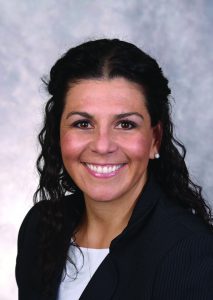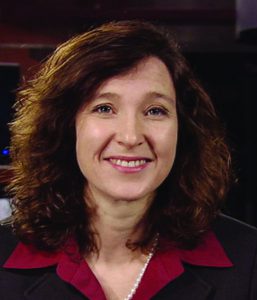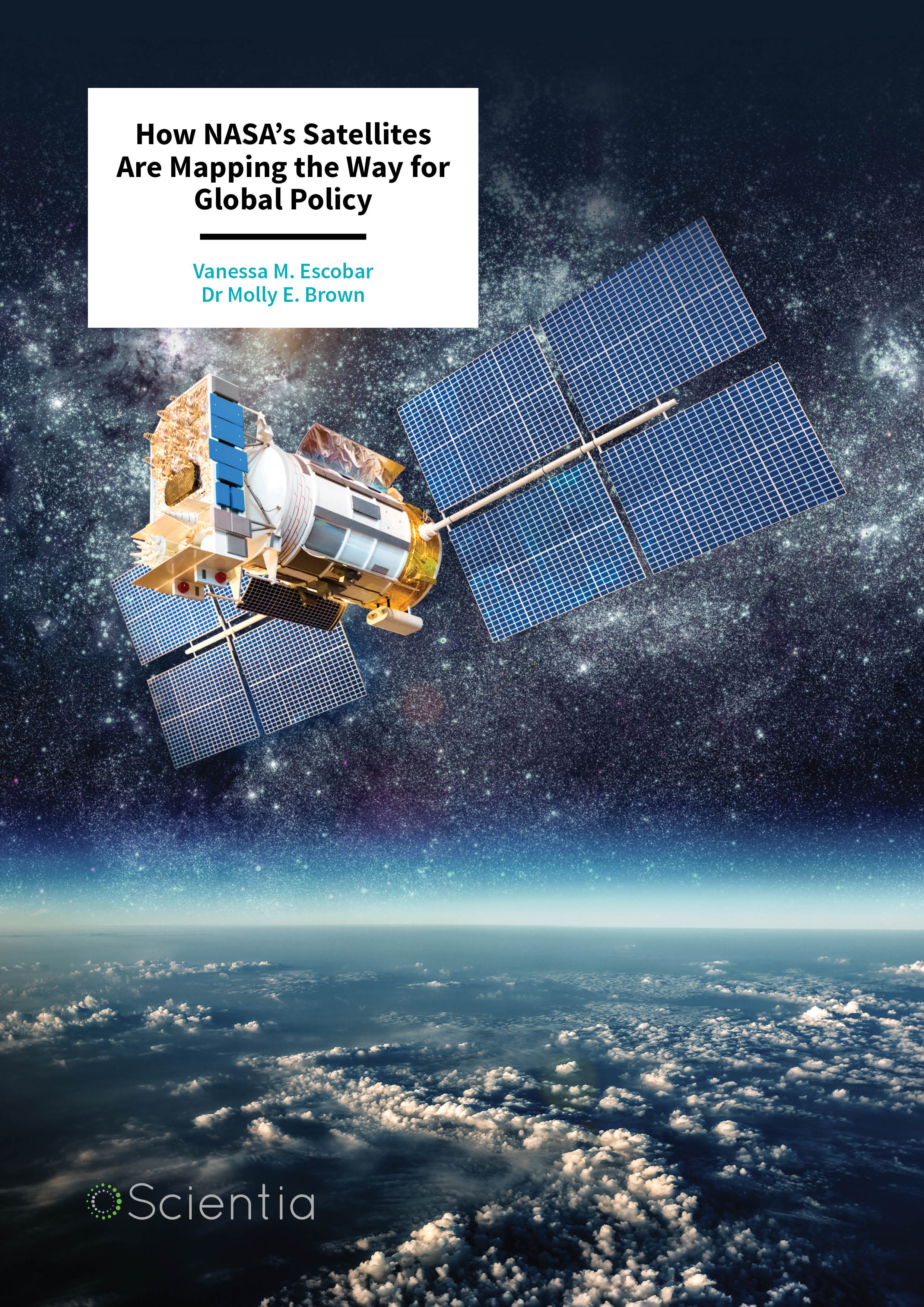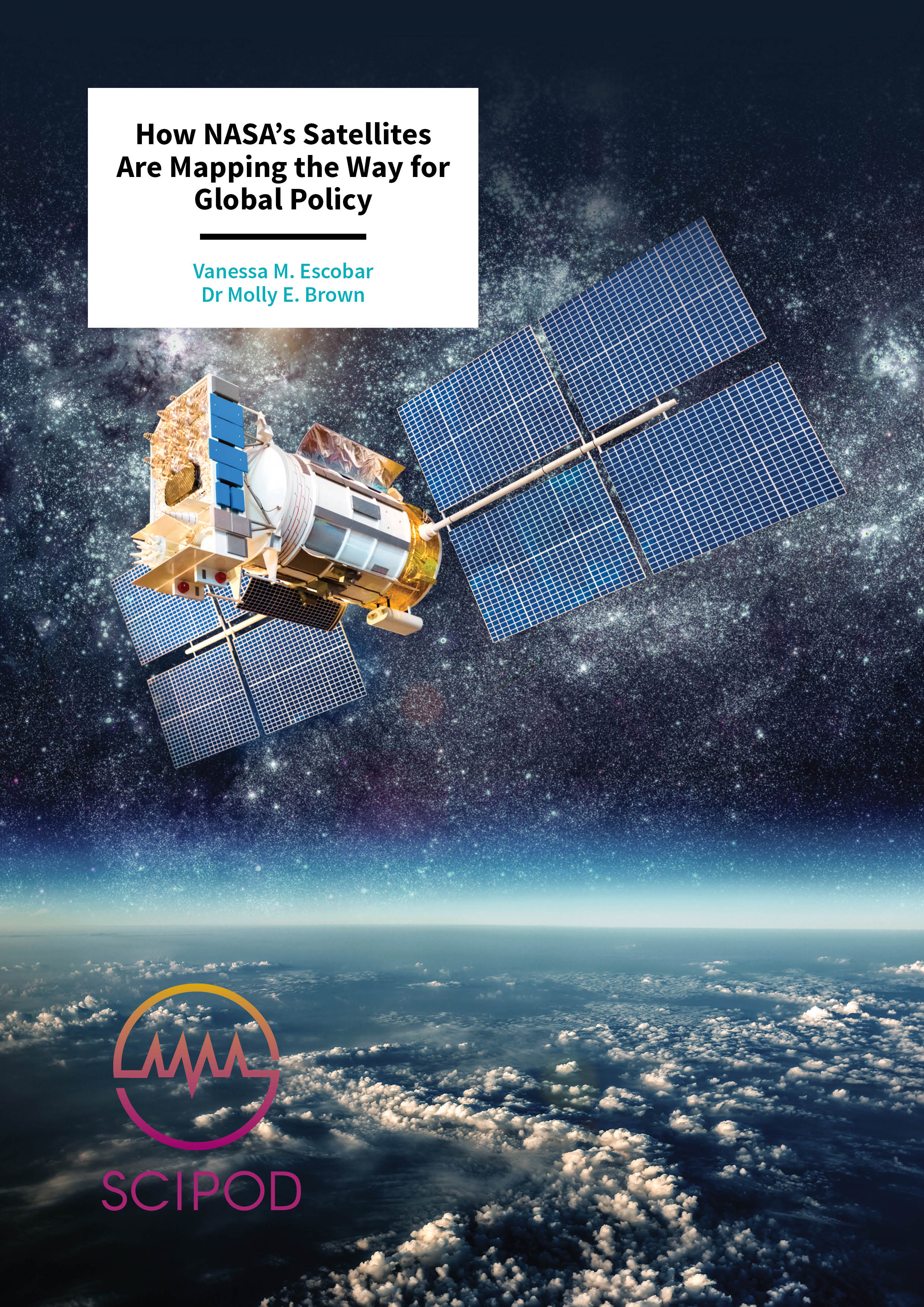Vanessa M. Escobar | Molly E. Brown – How NASA’s Satellites Are Mapping the Way for Global Policy
NASA’s satellite technologies have provided a wealth of data about the planet, and can be tailored into usable products to support major decision makers across the world. Vanessa M. Escobar and Molly E. Brown are working to bring these data products to decision-making organisations, to help them reach their goals, while also supporting the sustainability of our delicate planet.
Major initiatives have recently been put in place to monitor the changing behaviour of the Earth – erratic air masses, receding ice sheets, shifting soils and the unbalanced global exchange of carbon. By observing our home planet, we can piece together a picture of how different parts of the Earth interact, and identify the key drivers of environmental change.
Of particular importance, is the study of human-induced climate change. Perhaps the greatest challenge of our time, climate change motivates scientists to keep a close eye on the planet, and encourages institutions across the world to meet their sustainability goals. The European Union and United Nations have already defined ambitious plans to reduce global carbon emissions and seek sustainable solutions, so that we can hopefully mitigate the most damaging effects of climate change in years to come.
Remote sensing technologies such as satellites provide us with a wealth of information about the Earth – whether it is data on the oceans, air, forests or ice sheets. Satellites use different wavelengths of light to measure the planet’s health, including visible light to observe disturbances caused by people across land, radar (radio-frequency) for assessing the height of foliage, or infrared light for identifying bodies of water that lie below thick forest canopies.
Although there has been an enormous amount of effort dedicated to developing remote sensing and imaging tools to probe the environment, there is a need for more work to translate the information they offer over to the organisations that define policies for environmental management, or set sustainability goals, for example. These organisations may be government bodies, environmental groups or commercial users, who can use these data to enhance their existing tools to make better-informed policy decisions, or develop new and improved management systems.
‘Concentration on the user and the user’s culture is as important as the expertise of the science products themselves’ – Escobar
NASA’s Applied Sciences Program
Vanessa M. Escobar of NASA Headquarters and Molly E. Brown of the University of Maryland are finding ways to connect Earth science data with policy makers through the NASA Earth Sciences Division and the NASA Applied Sciences Program. While the NASA Earth Sciences Division seeks to understand our Earth and its key changes, the purpose of the NASA Applied Sciences Program (ASP) is to find effective ways of giving the global community access to Earth science knowledge.
‘The impact and value of the science needs to be tailored to individual communities and this translation must be reflective of the organisation’s culture and policies,’ explains Escobar. ‘Thus, a focused concentration on the user and the user’s culture is as important as the expertise of the science products themselves.’
The team is continuously working to develop methods to help users interpret, access and apply NASA Earth science data, which can then be provided to organisations that can truly benefit from them. The team is achieving this by networking with institutions across multiple countries, organising thematically tailored communication strategies and workshops, while implementing new NASA guidelines for focusing future satellite project efforts to engage with users during the development of the satellite. This is to ensure that after launch, the feedback for the user community is reflected in the products and the applications are more streamlined for operational uses and decision support processes.
‘The most recent and most important change for application s of Earth science data at NASA has been the development of the Flight and Applied Science Mission Application Guidelines,’ says Escobar. These guidelines, which the team worked on for four years, are now an official policy that encourages scientists to take users’ feedback and needs into account when designing satellite missions and satellite derived products.
By involving user organisations’ goals, needs and uses of science data in their operations, Escobar and Brown are increasing the value and potential impact of NASA’s satellite missions, while raising awareness of the environment and the impact of human-induced climate change. With the information NASA offers, and the products they develop, institutions such as governments, councils, commercial, non-profits and environmental groups will possess vastly greater knowledge about the planet, and will therefore be in a position to make better-informed decisions.

Early Adopters: Involving Users at an Early Stage
The ASP initiatives are targeted towards all potential users of the information, including ‘Early Adopters’ – individuals who volunteer to test mission project’s products, and work to determine how the data can benefit their organisations. By providing key feedback to the missions, Early Adopters can have an active role in ensuring that NASA science data products are continuously developed and improved upon. Escobar and Brown have shown that engaging with users at an early stage in their mission not only improves the team’s data prototypes, but also provides enhanced knowledge bases for the users. This is a win-win situation, where both the scientists and the organisations benefit from knowledge sharing over time. Brown emphasises that ‘early engagement with science data users results in much more rapid and meaningful use of new satellite data products’.
While the quantity of Earth science data collected by NASA satellites is vast, the diverse users of the team’s products each have their own unique objectives. As such, the ASP Early Adopters initiative is divided into satellite mission-focused programs. These comprise strategies that focus on the global monitoring of soil, ice, water, air and carbon exchange.
The Soil Moisture Active Passive Mission
NASA’s Soil Moisture Active Passive (SMAP) mission uses satellite microwave technology to present soil moisture maps that help identify variations of soil moisture content around the world at the earth’s surface as well as identifying frozen or thawed soil at the Earth higher latitudes. This information can be used to guide policy decisions for crop production and even preserve our safety through predicting droughts and floods.
SMAP makes global soil moisture and freeze thaw measurements from space, providing data on the weather, climate, flooding, agriculture and human health. With this information about soil moisture and freeze/thaw we can improve weather forecast and better prepare for droughts and flooding. SMAP’s products are currently being used by several monitoring agencies, such as the National Drought Mitigation Center, who use soil moisture maps to assess drought risks and their potential impacts across the US. These products are also being used by the US Forest Service to monitor the risk of wildfire occurring across the North Carolina Coastal plain, along with the NOAA National Weather Forecasting Center, USDA National Agricultural Statistics Service and Canadian Weather-Environment Canada.
Launched in January of 2015, SMAP was the first NASA missions to design and implement an Early Adopter Program. Escobar and Brown worked with SMAP to design formal application strategies and the Early Adopters starting in 2009 and have been guiding the mission ever since. Through the Early Adopters and the translation of mission science to the user community, the SMAP mission has been helping bring the mission data into the hands of major decision-making organisations.
Although called an ‘active–passive mission’, the active part of the satellite (the radar), unfortunately failed after the first 10 weeks of data collection. The passive part of the mission (the radiometer) has exceeded the performance and measurement expectations, providing data that not only meets the high demand for radiometer measurements, but also lends itself to the development of finer resolution products blended with the European Satellite Agency (ESA) Sentinel mission’s Data. By blending the Sentinel synthetic aperture radar (SAR) data with the SMAP Passive data, SMAP can develop higher spatial resolution products that were originally promised by the mission, but now at a longer latency (every 12 days rather than every 3 days). This blending also allows the mission to deliver combined passive/active products highly sought after by the user community. ‘Combining the SMAP Passive signal with Sentinel allows the mission to provide higher resolution soil moisture products every 12 days,’ says Escobar.

The ICESat-2 Satellite
The effects of climate change are closely reflected by the sizes of the planet’s ice sheets. The first Ice, Cloud and Land Elevation Satellite (ICESat) was created in the 1990s to measure the growth and retreat of ice sheets across the globe. Operating until 2009, it was than succeeded by a newer model named ‘ICESat-2’, which sprang into action in 2016.
The ICESat-2 satellite houses an instrument called the Advanced Topographic Laser Altimeter System (ATLAS), whose aim is to collect much higher resolution readings of ice sheet and sea ice thickness than ICESat was capable of. Accurately measuring the height of ice sheets has long been a challenge for scientists, but this is now possible with ICESat-2, which can measure the changing thickness of ice sheets across polar regions.
When used beyond the polar world, ICESat-2 can also measure elevations in ocean and land. Such versatility allows it to estimate vegetation height, cloud elevation and sea level. The team has even combined this tool with specific projects to identify ice bergs in shipping lanes, and to help safely guide hunters in Alaska. This is achieved with the help another airborne instrument called the Multiple Altimeter Beam Experimental Lidar (MABEL), which offers an enhanced ability to analyse surface features such as ice, inland water, coastal ocean and regions of forest. As part of the ASP mission, Escobar and Brown are working towards bringing models and programs to organisations that can benefit from having access to ICESat-2 data.
‘Early engagement with science data users result in much more rapid and meaningful use of new satellite data products’ – Brown
NASA’s Carbon Science Research
In yet another important initiative, the NASA’s Carbon Science Research project seeks to enhance community expertise in carbon monitoring, by showing them how remote sensing technologies can help reveal the Earth’s carbon cycle. Its pilot projects focus on monitoring reporting and verifying the Earth’s carbon sources, sinks and fluxes, by measuring the carbon content in vegetation, land, atmosphere, oceans and the coast – the movement of carbon dioxide (the primary driver behind climate change) between the biosphere and the atmosphere.
Strategies are aimed towards institutions that monitor the ocean, land and atmosphere – realms that hide clues of where carbon is stored, and released. Carbon sinks are places such as forests, soils and oceans that absorb more carbon dioxide than they release, and are vital for helping us to curb climate change. Conversely, carbon sources contribute more carbon dioxide to the atmosphere than they absorb, such as forest fires and burning fossil fuels. The interplay between sinks and sources is what NASA’s Carbon Science researchers set out to observe, while also sharing their insights with institutions that may benefit from the information – whether it be organisations dedicated to climate change mitigation, food security or forest management.
To achieve this, the team organises, facilitates and translates the communication between carbon monitoring scientists and decision-making organisations, such as government regulators. By identifying gaps in knowledge, challenges in access and awareness and by aligning the appropriate data needs with science capabilities, Escobar and Brown work to find ways of helping larger communities understand potential uses and impacts of carbon science data to inform major decision processes. This is of particular relevance to environmental regulators, and targets that seek to reduce the impacts of climate change, such as the United Nations Sustainable Development Goals.
Our Place on the Planet
Escobar and Brown emphasise that although obtaining accurate Earth science data is vital in our quest to combat climate change, it is just as important to translate the relevance of this data collection to groups that can benefit from it. Through the NASA Earth Science Division and especially the Applications Sciences Program, the team is helping organisations to use NASA’s remote sensing projects for the benefit of the user (tax payers), in the most relevant way for their particular goals.
Using remote sensing science in business, marketing, risk management and environmental protection can increase awareness, reduce risk and help inform decisions that need to be made day to day by tax payers. From allocating resources to roads for snow preparedness, to assessing potential property losses in flood predictions, to evaluating the risk of residential power outages prior to storms, remote sensing contributes to all of this and more. All of this links directly to the conservation of jobs, resources and lives. It’s simply a matter of translating the science into societal relevance.
By involving users from the mission inception, the team is also adding value to satellite surveillance missions, and Earth system science. In the future, Escobar and Brown will continue to increase community involvement with NASA’s missions and remote sensing programs. After all, such information must be shared with those who can use it to enforce positive change, for the benefit of humanity. If with information comes power and responsibility, the team is empowering decision makers across the globe to take action against the risk of climate change and make informed decisions to mitigate its effects. As Escobar puts it: ‘Information is only useful when its used and applied, and not using information that can avoid a hazard or danger can be priceless.’
Meet the researchers

Vanessa Escobar
Booz Allen Hamilton
NASA Headquarters
Washington DC
USA
Vanessa Escobar achieved her BSc in Geology from Sonoma State University, before gaining her MSc in Geology and Water Policy at Arizona State University ASU. She is currently working on her PhD in the Geography Department at the University of Maryland, where she focuses on the impact of satellite data on decision making. She first started working at NASA in 2010, where she began as a Research Scientist at NASA Goddard Space Flight Center, for Sigma Space Corporation Inc, before progressing to her existing role at NASA Headquarters as a Lead Associate for Booz Allen Hamilton. Her research includes a range of hydrogeological and groundwater monitoring projects, risk assessment and management, with a particular focus on the integration of remote sensing with societal applications.
CONTACT
E: vanessa.escobar@nasa.gov
T: (+1) 602 697 0832
W: https://science.gsfc.nasa.gov/sed/bio/vanessa.m.escobar

Dr Molly E. Brown
Department of Geographical Sciences
University of Maryland
College Park
USA
Dr Molly Brown achieved her BSc in Biology and Environment Sciences at Tufts University in 1991, before gaining a PhD in Geography at University of Maryland in 2002. She began working on NASA-based projects in 1999, before becoming a Research Scientist at NASA’s Goddard Space Flight Center in 2008. She currently works as a Science Officer for 6th Grain Global Private Limited, studying remote sensing for farming applications in Africa, the middle east and south Asia. Dr Brown is also an Associate Professor at University of Maryland, where she researches global change and sustainability.
CONTACT
E: mbrown52@umd.edu
W: https://geog.umd.edu/facultyprofile/Brown/Molly
KEY COLLABORATORS
Arizona State University
FEMA
City University New York (CUNY)
Lloys of London
NOAA
Environment Canada
FUNDING
NASA


